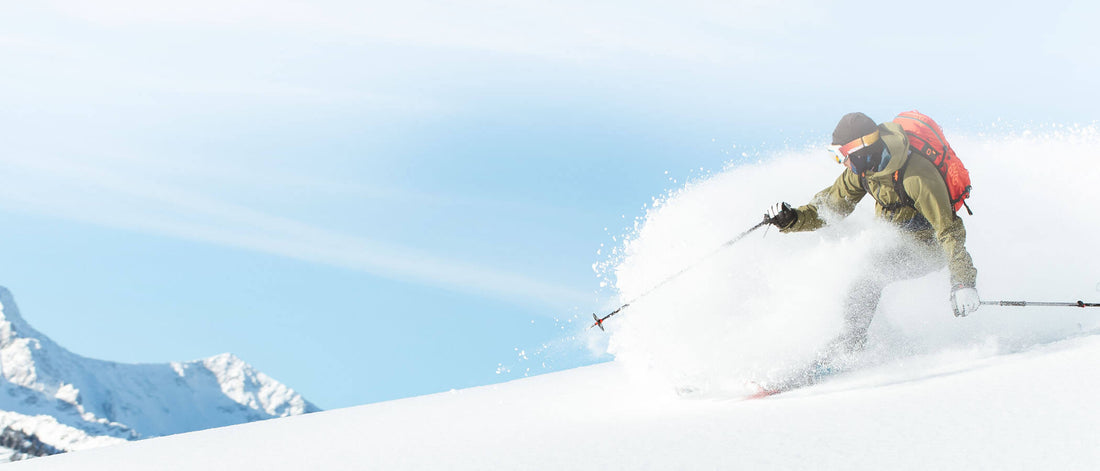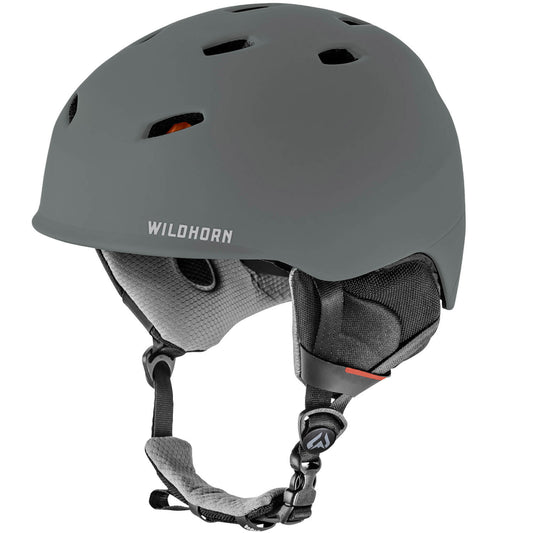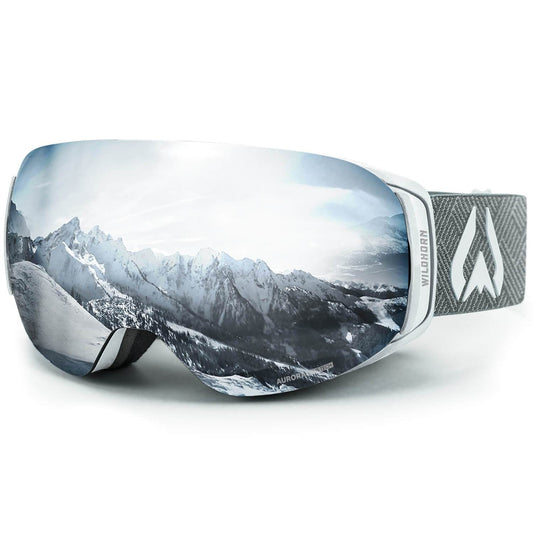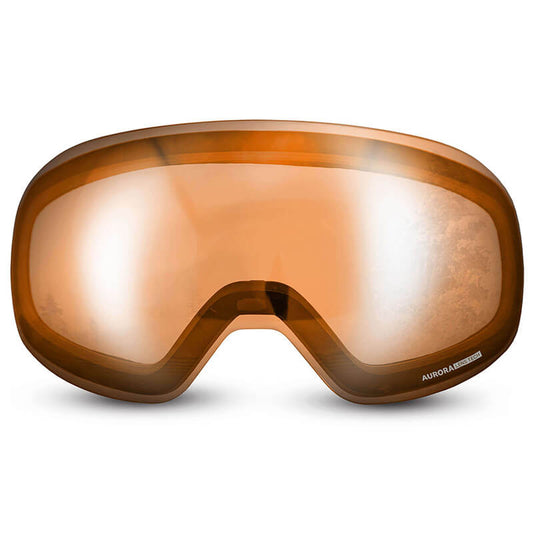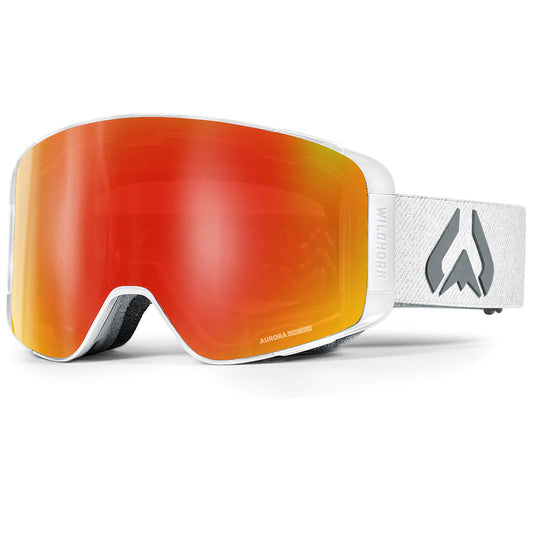Essential Backcountry Skiing Gear Checklist And Must-Haves
By: Riftbox BrandsBackcountry skiing. It’s just as exhilarating as regular skiing and also happens to be free. But when skiing in the backcountry you ski at your own risk so it is important to be prepared. If something unexpected happens, you and your friends will need to be your own first responders. This means carrying a little extra weight in gear. It may feel like a lot when you’re packing up, but you’ll be grateful for the peace of mind. Use this list to make sure you don’t forget any essential backcountry skiing gear.
What to bring backcountry skiing?
You’ll obviously want the basics; skis, poles, warm (and waterproof) layers, helmet, and goggles. Basically everything you would need for a regular day at the ski resort. But that’s just the start. Here are a few other things you’ll want to bring:
First aid kit
You should have a full first aid kit when going backcountry skiing. That means you need more than just a pack of band-aids and a travel-size bottle of ibuprofen. Be sure to have a fully stocked first aid kit with you that you’ve customized with a few other items you may need during an icy emergency. For example, packing some extra hand warmers could save your fingers and toes in a pinch. A travel-size sunscreen will be good to have on hand for bluebird days. A list of items to keep in your first aid kit can be found HERE.
Slope Evaluation Card
Slope evaluation cards can be found online and printed out to take with you on the slopes. Or you can purchase one that is pre-laminated to carry with you. Not all slope evaluation cards are the same so make sure you choose one that will have all the information you need to understand the characteristics of your terrain.
Ski Shovel
You NEED a shovel. Do not go backcountry skiing without a shovel. This is a lifesaving tool. We cannot emphasize the importance of a shovel enough. You can purchase a compact portable backcountry ski shovel that easily expands for emergencies and fits into your boot bag.
Avalanche beacon
If you’re new to spending time in the snowy backcountry you may find yourself wondering “What is an Avalanche Beacon? Why do I need one?”
An avalanche beacon or PLB (personal locator beacon) is a device you can wear in the backcountry that makes you easier to find if you get buried in an avalanche. It does this by sending out a strong radio signal that search and rescue teams (or your friends) can track. Avalanche beacons send out this signal only when they’re turned on and activated.
Beacon vs Transceiver
Snow Probe
A shovel and a beacon are going to be a lot more useful when you combine them with the use of a probe. These collapsible tools allow you to check the depth of the snow and know exactly where to dig after detecting the strongest possible signal with your transceiver.
Skins
Is there a part of your trip that will require you to skin uphill? Ski skins will be helpful with the uphill grind. Hiking may get you to your destination faster but skinning is a little easier on your body since you’re sliding the weight of your skis rather than carrying them on your back. If you didn’t bring along extra hiking boots then skinning will definitely be easier than hiking in ski boots.
Headlamp with extra batteries
Starting your day during the dark morning hours? You’re going to want a headlamp. If there is an emergency or the sun sets quicker than you’d planned on, you’ll be glad you brought along a light. A headlamp saves you from needing to use one hand to hold a flashlight. Headlamps also tend to be lighter than flashlights so if you want to be extra safe you can bring two. You may want to keep your extra batteries in an inner jacket pocket to keep them from losing juice while spending hours out in the cold weather with you.
Whistle or other signaling device
If you find yourself in need of assistance in the backcountry, you’ll want to have more than one plan for drawing attention to yourself. This means making noise and setting off some kind of visible distress signal. You may also want to look into getting an electric “flare” device. These allow you to send out a distress signal using light and don’t require as much maintenance as flare guns do. A benefit of using a battery-powered distress light is the ability to set it up and leave it running while waiting for help.
Matches, lighter, or fire starter kit
If you get lost or hurt, a fire can both keep you warm and attract a rescuer. A lighter doesn’t weigh too much so this is definitely something you have room for.
Extra food and water
Don’t underestimate how much food you’ll need for the day. Pack a little extra in case you spend more time in the backcountry than originally planned. It is also wise to bring along a water filter or water treatment system in case you run out of clean water to drink. Don’t be the person in the group who eats snow.
Reflective blanket, tarp, or bivy.
It’s always a good idea to have some kind of makeshift shelter with you. I would suggest going with whichever lightweight option keeps you the warmest.
Guidebook or map
There are a lot of apps that you can use to download routes and maps, but keep in mind that those only work when your phone still has battery left. Your phone battery will drain a lot quicker than normal in the cold so be sure to bring a hard copy of a map along with you.
Compass
Having a compass on hand will really help make the map more effective.
Walkie-Talkies
They are definitely not a necessity for backcountry skiing but it makes it a lot easier to stay in touch with your buddies when you don’t have cell service.
Satellite phone
An alternative to walkie-talkies is the more expensive satellite phone option. A satellite phone uses satellites rather than cell phone towers to send your texts or connect your outgoing calls. This provides you with the ability to make calls in areas where you have no cell reception. These can be expensive so a good way to decide if it is worth the investment is to rent one and spend some time learning about it.
This is not an essential item for weekend warriors but if you spend most of your life in the mountains, it can be a lifesaver. Literally. Make sure you test it before each trip to the backcountry.
What is the most important piece of equipment you bring into the backcountry?
Avalanche Education. A basic avalanche awareness course can teach you how to recognize unstable snow, avalanche triggers and avalanche warning signs and is more valuable than any single piece of equipment. Part of a proper avalanche education is remembering to check the avalanche forecasts and use avalanche safety equipment. This means you should practice using your avalanche safety equipment from time to time to stay sharp.
You can also find educational resources about avalanches online or see if your local resort offers classes.
Avalanche safety skills will save your life, so we encourage getting as much training as you can beyond a basic avalanche safety course.
Can you use regular skis for the backcountry?
You can use your regular skis or even a split board. What’s more important than the actual skis you choose are boots and bindings that make it easier for you to lift your feet if you plan to be skinning uphill. Ideally, you will want to get a separate pair of skis for backcountry skiing so you won’t have to frequently switch out the bindings.
Do you need different boots for backcountry skiing?
If you’ve practiced in your ski boots and feel that you can handle it, give it a shot! But you can also get lighter-weight ski boots specifically designed for backcountry skiing. These kinds of boots are even designed to adjust from walking mode to skinning mode to skiing mode. If you spend a lot of time backcountry skiing, they’re worth looking into.
Backcountry skiing is well worth the preparation it takes before heading out to the slopes. Knowing that you have the correct backcountry gear with you to protect you and your friends will give you peace of mind. This will allow you to safely enjoy your time in the backcountry.

